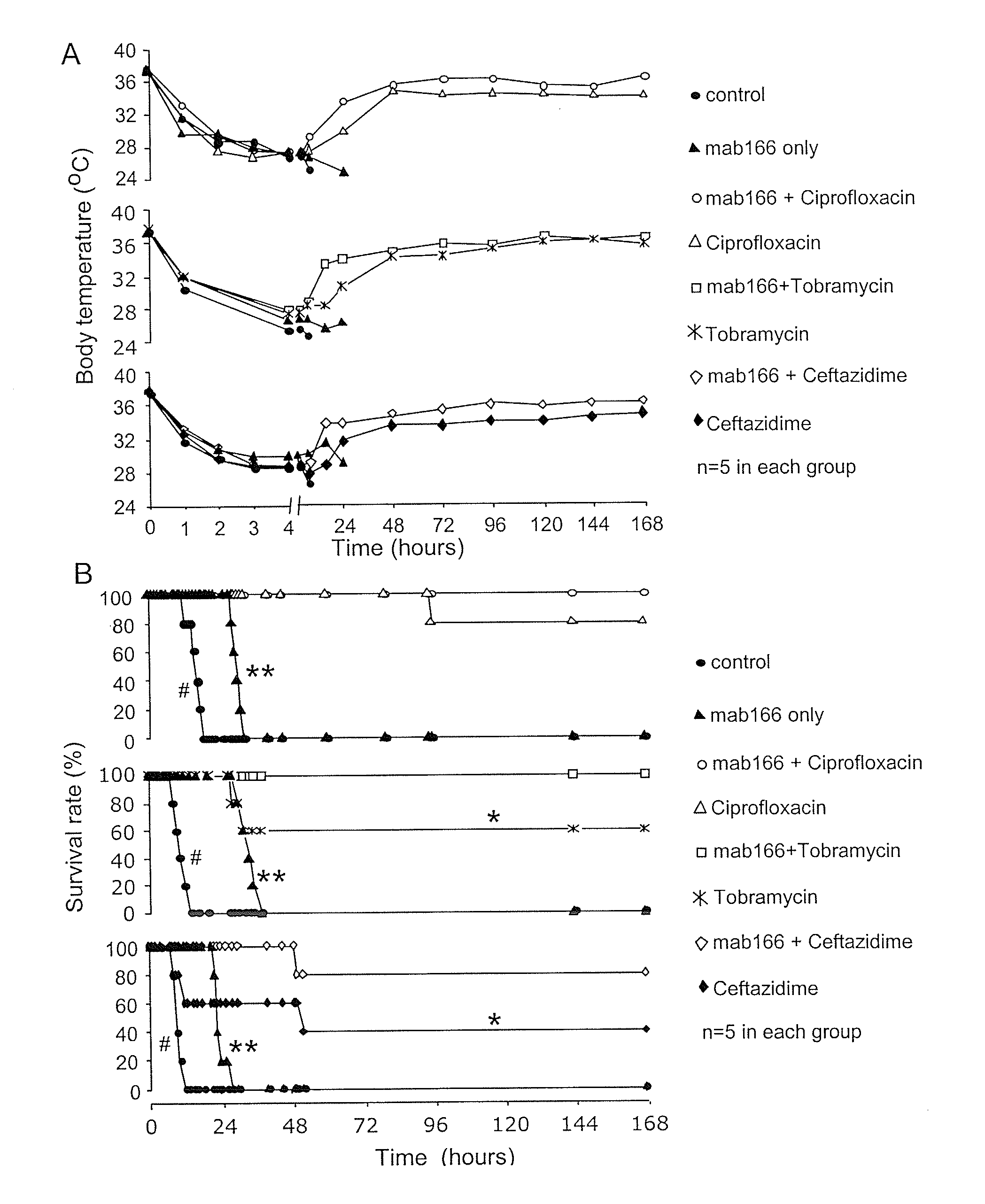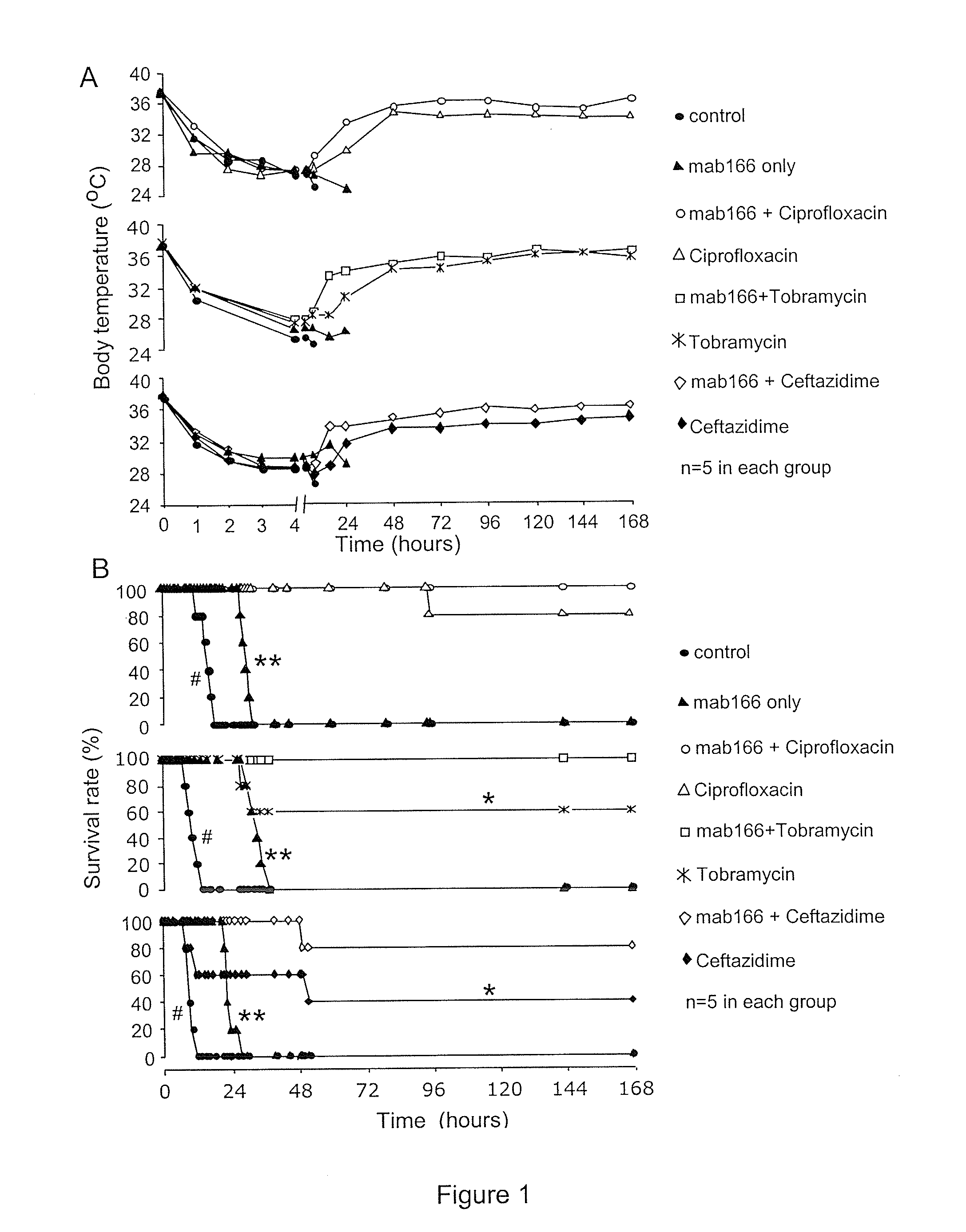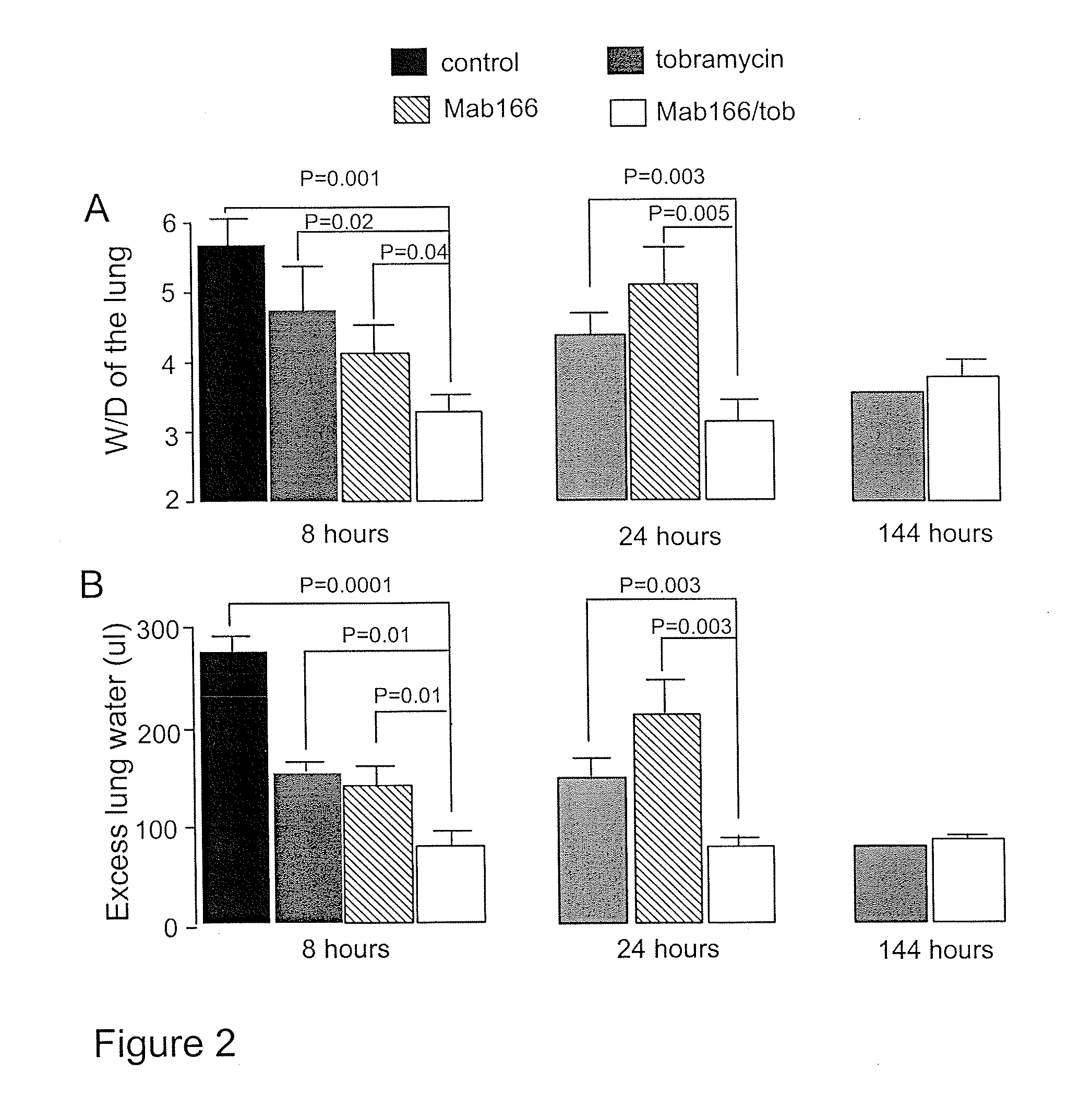Combination antibiotic and antibody therapy for the treatment of pseudomonas aeruginosa infection
a technology of antibody therapy and pseudomonas aeruginosa, which is applied in the direction of antibacterial agents, drug compositions, medical ingredients, etc., can solve the problems of ineffectiveness of antibiotics, inability to effectively treat patients infected with p, and known toxic effects of antibiotics. to achieve the effect of effective treatment of patients
- Summary
- Abstract
- Description
- Claims
- Application Information
AI Technical Summary
Benefits of technology
Problems solved by technology
Method used
Image
Examples
example 1
Effects of Antibiotic, Anti-PcrV Antibody Combination Therapy In Vivo
Material and Methods:
[0153]Antibiotics and Mab166 preparations. Four anti-Pseudomonal antibiotics were used in this example: ciprofloxacin (Bayer HealthCare, N.J.), ceftazidime (GSK, UK), tobramycin (Abraxis, Ill.) and piperacillin (Wyeth, Pa.). Antibiotic solutions were made immediately prior to use. Anti-PcrV antibody Mab166 was diluted to a working concentration of 3 mg ml−1 in sterile PBS.
[0154]Bacterial administration and lung injury measurement in mice. Following anesthesia with avertin (250 mg kg−1; ip), mice were inoculated with a volume of fifty μl of bacterial working stock (1.5×106 CFU), which was instilled into the left lung through the trachea using a 27G gavages needle. Mice were allowed to recover for 15 minutes prior to being returned to their cages. Mice were active and appeared normal 30 min post inoculation. Rectal temperature was recorded hourly for the initial 12 hours post bacterial instillati...
example 2
Identification of Engineered Human Anti-PcrV Fab Molecules for Use in the Invention
[0182]Epitope-focused engineered human antibody Fab libraries were generated as described in US patent application 20050255552. V-segment sequences derived from repertoires of human immunoglobulin sequences were cloned upstream of a selected CDR3-FR4 sequence for each of the heavy and light chains.
[0183]For heavy-chain repertoires, the CDRH3 comprises a D-segment derived sequence (NRGDIYYDFTY) from a previously identified anti-PcrV monoclonal antibody (Mab166; Frank et al 2002 J. Infectious Dis. 186: 64-73) which constitutes a binding specificity determinant. The sequence of the complete CDRH3-FR4 sequence for the heavy chain repertoires is shown below.
For VH1 library 1015, the CDR3-FR4 combination used was:
CDR3NRGDIYYDFTYAFDIWGQGTMVTVSS (FR4 = JH3)
For VH3 libraries, the CDR3-FR4 combination used differed by a single amino acid in CDRH3:
CDR3NRGDIYYDFTYAMDIWGQGTMVTVSS (FR4 = JH3)
[0184]For light-chain r...
example 3
PEGylated Humaneered Fab′
[0194]In this example, a Fab′ consisting of a human Fd′ heavy chain of the IgG1 sub-class and human kappa light chain linked by an inter-chain disulfide bond involving the C-terminal cysteine of the kappa chain and the cysteine residue C227 of the heavy chain (numbering sequentially from the N-terminus of the mature protein) was PEGylated. The recombinant Fd′ heavy chain contains the IgG1 CH1 domain and the IgG1 hinge region including two cysteine residues which are available after reduction for conjugation to maleimide groups. Thus the expressed antibody protein is a disulfide-linked heterodimer of Fd′ heavy chain and a kappa light chain, containing a total of 452 amino acids.
[0195]To generate an immunoconjugate with a reduced rate of in vivo clearance and thus an improved pharmacokinetic profile, the Fab′ is conjugated to polyethylene glycol (PEG). In di-PEGylated Fab′, each molecule of Fab′ is conjugated to two long-chain PEG molecules by site-specific at...
PUM
| Property | Measurement | Unit |
|---|---|---|
| Fraction | aaaaa | aaaaa |
| Fraction | aaaaa | aaaaa |
| Time | aaaaa | aaaaa |
Abstract
Description
Claims
Application Information
 Login to View More
Login to View More - R&D
- Intellectual Property
- Life Sciences
- Materials
- Tech Scout
- Unparalleled Data Quality
- Higher Quality Content
- 60% Fewer Hallucinations
Browse by: Latest US Patents, China's latest patents, Technical Efficacy Thesaurus, Application Domain, Technology Topic, Popular Technical Reports.
© 2025 PatSnap. All rights reserved.Legal|Privacy policy|Modern Slavery Act Transparency Statement|Sitemap|About US| Contact US: help@patsnap.com



